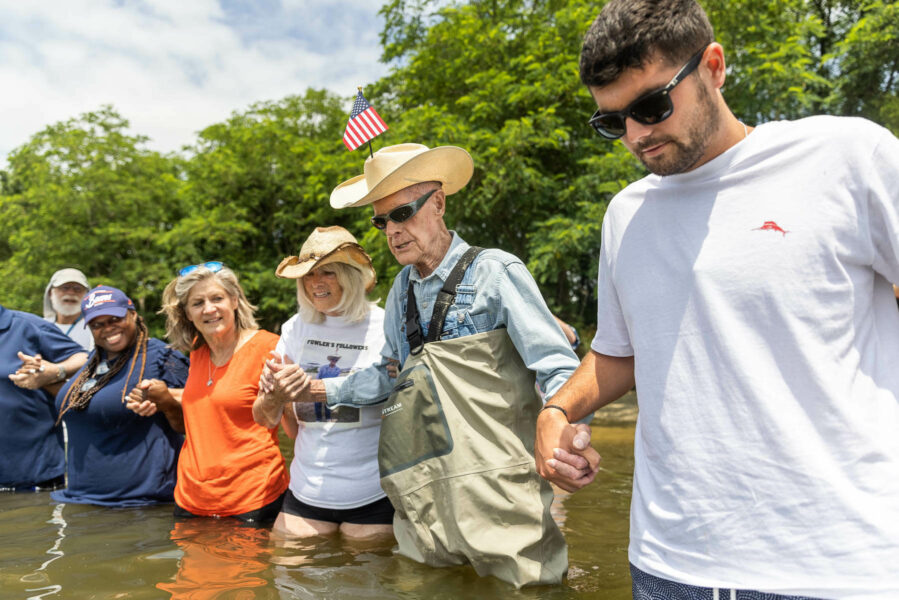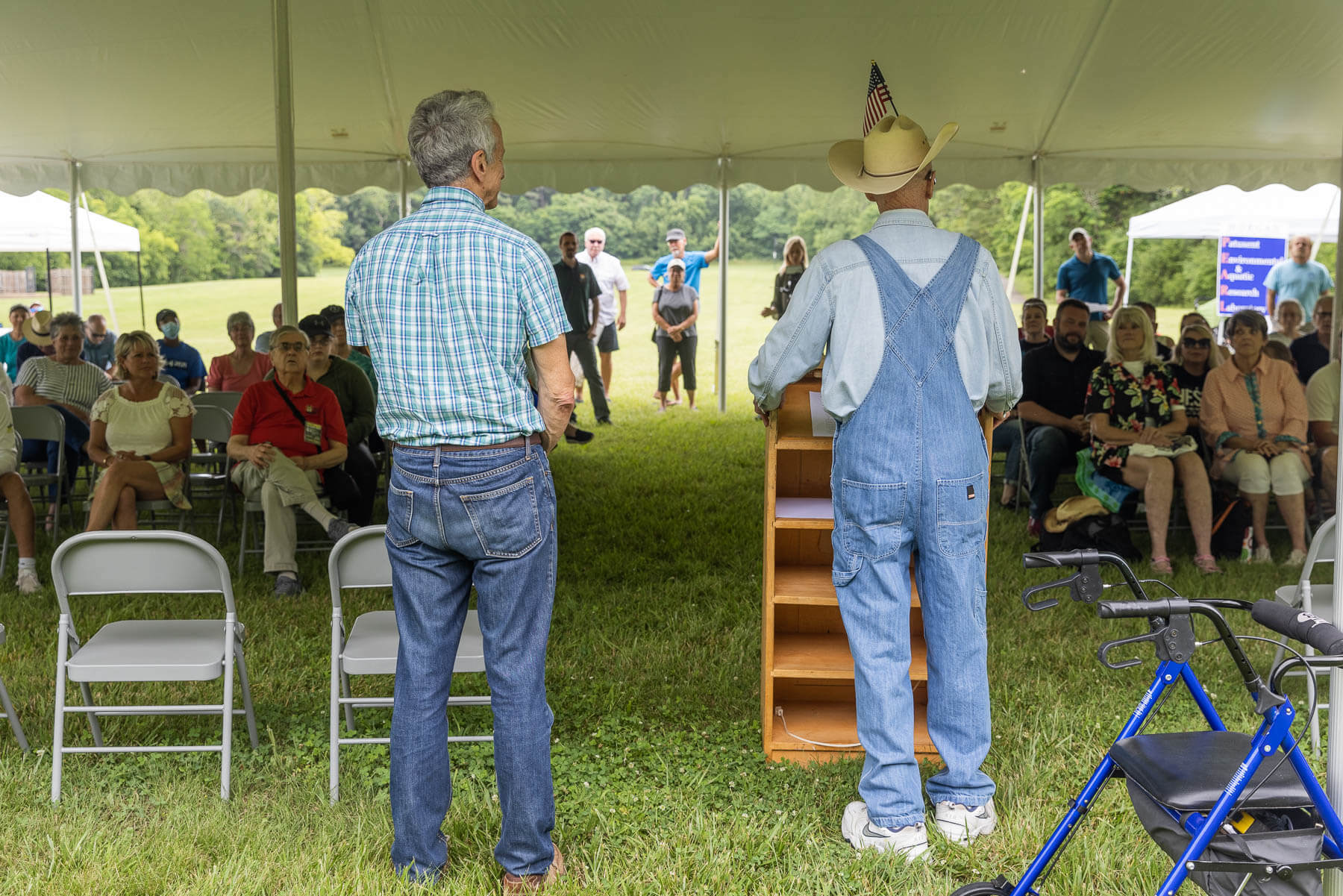‘Sneaker Index’ of 34 inches measured at Bernie Fowler Wade-In

The sun was shining as former Maryland State Senator Bernie Fowler waded into the Patuxent River with family, friends and supporters, but recent rains had muddied the water. The former senator was only able to see his shoes up to 34 inches deep—9 inches less than last year’s “sneaker index.”
Senator Fowler’s “sneaker index” is a fun way to assess the health of the river annually, and to draw attention to how pollution impacts the Chesapeake Bay and its tributaries. The term refers to how deep the former state senator could wade into the Patuxent before he lost sight of his signature white sneakers.
Water clarity is critical for the survival of underwater grasses, which help keep Bay water clean by absorbing nutrients and provide shelter and food for wildlife. Water clarity is also a good indicator of the amount of nutrient and sediment pollution that exists in a river. Heavy rain, like what occurred in Maryland a day before the wade-in, can increase stormwater runoff, allowing additional pollution to flow into the water.

At 97, it may seem like the former Maryland senator should be slowing down. But Senator Fowler grew up near the Patuxent River during the Great Depression and wants to help it get back to its former health. He said the river helped people get through those difficult times.
“When the banks bust, that’s really tough,” Senator Fowler said. “But the thing that kept me going [in the 1930s] was the fact that the river was abundantly loaded with all kinds of products.”
Senator Fowler hosted his first wade-in in 1988 after noticing the decline of the Patuxent’s health due to nutrient and sediment pollution. The University of Maryland Center for Environmental Science’s most recent Chesapeake Bay Report Card gave the river a D-, making it the lowest scoring region in the bay area.
The former state senator remembers a time in the 1960s when he could see his feet up to 57 inches below the surface of the water. This “sneaker index” now serves as the goal for a healthy Patuxent River.

Comments
There are no comments.
Thank you!
Your comment has been received. Before it can be published, the comment will be reviewed by our team to ensure it adheres with our rules of engagement.
Back to recent stories